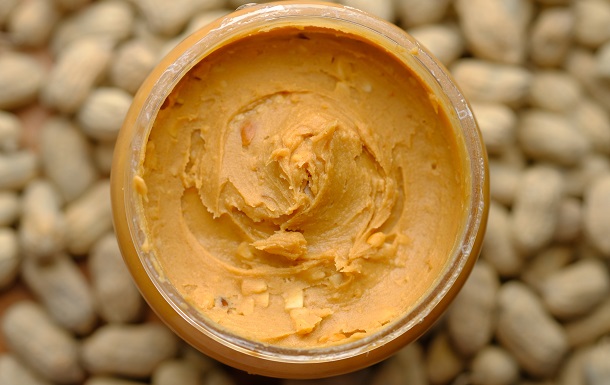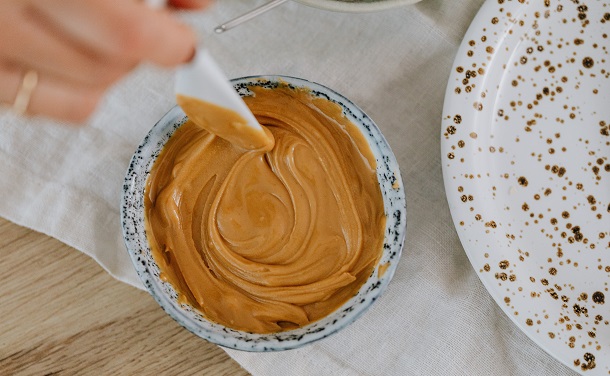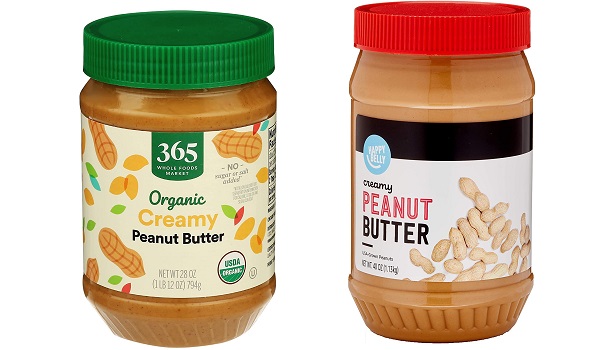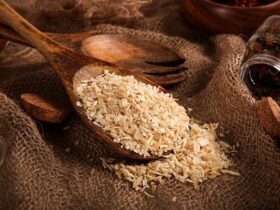You’re waking up in the morning, craving peanut butter, finally you find the jar, open it and the peanut butter is -watery?
Is it gone bad? Can you eat it?
Let’s learn why that happens and what to do.
IN THIS ARTICLE:
Why Is My Peanut Butter Watery?
Because of its rich taste and creamy texture, peanut butter is a very popular spread. It is a good source of vitamins, minerals, healthy fats, and other essential nutrients.
Also, when compared with other spreads, this butter has a long shelf life, so you don’t have to eat it just in a day or two. That’s because of high-fat content and relatively low moisture content.


If your peanut butter becomes watery, that means you have a natural non-homogenized product, which is a good thing. So, the reason why that happened is that peanut oil is rising to the top. This is a perfectly normal thing. So, peanut butter isn’t made with water, it’s actually oil.
For Those Who Want To Know More
There are two types of fat-saturated and unsaturated. Saturated fats are solid at room temperature, whilst unsaturated fats become liquid. Because organic peanut butter contains unsaturated fats, there is a liquid layer on the top of the butter.
That happens with organic and all-natural peanut kinds of butter since they don’t have additional additives. Oil just naturally separates from the other ingredients. That usually happens if your peanut butter jar has been stored at high room temperature.
What To Do When Peanut Butter Has Oil On Top?
There are a few things you can do when you notice oil on the peanut butter top:
- It’s a simple solution – you should stir the peanut butter to get the oil back and then you can use it. Be sure to use a clean spoon or knife to stir the butter, that’s how you’ll prevent faster peanut butter spoilage.
- Also, you can store your jar of peanut butter upside down. That leads to the oil rising to the bottom.
- If you refrigerate the butter it will become more thickened. So, if you want to prevent watery peanut butter, store it in the fridge – it will keep the same consistency. That probably won’t work with organic peanut butter, because it doesn’t contain preservatives.


Can I Pour Out The Oil In Peanut Butter?
That oil is needed to prevent the peanut butter become solid as a rock. Also, peanut oil is a natural thing, good for you, so there’s no need for pouring out the oil. Instead of this, choose one of the previously mentioned methods to fix watery peanut butter.
Difference Between Natural And Conventional Peanut Butter
Some differences are already mentioned, but store-bought peanut butter contains stabilizers to make the butter less runny and they eliminate the need for stirring before using.


Natural peanut butter is always thinner than store-bought one, so the stirring is easier. Also, it is a bit grainier than a conventional one.
How To Tell If Peanut Butter Has Gone Bad Or Is Just Oily?
Sometimes you can not be sure if the peanut butter is just oily or spoiled. First, if you aren’t sure, check the label on the container and the peanut butter’s expiration date (best-by date). After this period of time, your peanut butter is still safe for consumption, but its quality will be lower.
So, the best method to tell if the peanut butter has gone bad is to check its smell and appearance. Since fresh peanut butter is soft and creamy, bad butter has a hard and dry texture. If it is dry and impossible to spread on your bread, that is also a bad sign.


Plus, it will have a dark brown appearance. When it comes to smell, if it’s bitter, sharper and some kind of soapy, unfortunately, your peanut butter is done. Or if there is no aroma at all, it is spoiled.
And finally – taste. When you taste it and your peanut butter is slightly sour, you can be sure it’s gone off.
How Long Does It Last?
You can guess whether peanut butter is more likely to be just oily or spoiled when you consider its shelf life. Because commercial peanut jars of butter contain stabilizers and preservatives, they may last 6 -24 months if unopened. If left unopened, they will last 2 – 3 months. Of course, if you decide to place the peanut butter in the fridge, that will extend its shelf life.


When it comes to natural peanut butter, it has a shorter shelf life. That’s because there are no preservatives and stabilizers. It will last for months if unopened, or up to a month when opened.
How To Store It?
In any case, storing your peanut butter, either commercial or natural, in the fridge will prolong its shelf life. But it doesn’t need to be refrigerated. You can keep it in a cool, dry place (such as a pantry).
To Wrap It Up
Now, you can feel relieved when you know everything is good with your peanut butter, even it’s watery. That oil can be stirred back into the peanut butter and you’re good to go.














Leave a Reply